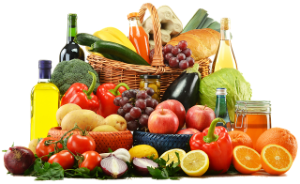Top Tips
Although most of the salt we eat is hidden in the processed foods we buy, there is still a number of things you can do to help reduce your salt intake when cooking or eating at home.
Top Tips 
- Cook from scratch using unprocessed meat, fish and vegetables
- Use fresh, tinned or frozen vegetables with no added salt
- Avoid adding salt during cooking or at the table, try adding other flavours such as pepper, garlic and lemon instead
- Cut back on sauces such as soy sauce, ketchup, brown sauce and salad dressings as these can be high in salt
- Choose lower salt-stocks, use half a stock cube, or make your own low-salt stock
- Remember sea salt and rock salt have the same effect on the body as normal table and cooking salt
- Try reducing the amount of salt you add gradually over a couple of weeks, allowing your taste buds time to adjust
- If you can’t get used to less salt, try using low sodium alternatives such as LoSalt
Shopping
- Know which foods are high in salt and try to swap these for healthier alternatives. See our shopping guide: PDF Leaflet - Shopping Guide [PDF 606KB]:
High salt foods include:
- processed meat and fish e.g. ham, bacon, salami, sausages, pate, smoked fish
- convenience foods e.g. pizza, pasties, ready meals, canned/packet soups
- salty snacks e.g. crisps, salted nuts, burgers, chips, salted popcorn - Always remember to check the labels and choose lower salt options
- Swap from branded products to retailers’ own brands, as they tend to be lower in salt
- Look for lower salt and ‘no added salt’ versions of your usual foods in the supermarket e.g. canned vegetables, tinned fish in spring water, ketchup and baked beans


